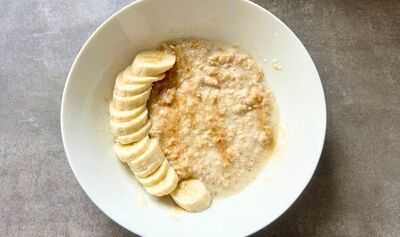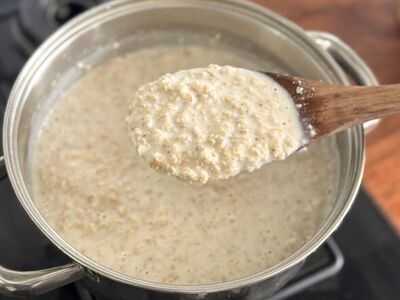
Breakfast is the most important meal of the day, and in winter, I love to have a bowl of porridge; it's a staple for many. Whether you like water or milk, jumbo oats or rolled oats, porridge is so versatile and quick to make.
However, I wanted to see what the best method was, so I decided to try a few, including cooking it in the microwave, on the hob and in the slow cooker. The slow cooker method was the one I was most excited to try, but I think my original go-to method took the top spot in terms of taste and texture.
Making porridge in a microwave is by far the quickest option, and definitely the least messy. I simply mix together my oats and milk in a microwave-safe bowl before placing it in the microwave.
Depending on your oat-to-milk ratio and how many oats you are using, cooking times will differ. However, mine took around four minutes, and I stopped it after two to give it a good stir.
It was a good consistency, but there were a few little lumps, which I didn't mind, but it may have needed another stir.
Overall, this is my usual go-to porridge-making method, and it never disappoints. I top with a little brown sugar and fruit, and it's a delicious autumnal breakfast.
SaucepanThe most traditional way to make porridge is to cook it in a saucepan. It offers more control over the consistency, but it does often take longer to cook.
I started by measuring half a cup of oats into my saucepan, followed by half a cup of milk, before combining.
Over a low to medium heat, the oats began to turn into porridge, and it smelled heavenly. However, unlike the microwave, cooking them on the hob requires you to continuously stir as they easily get stuck to the bottom.
Overall, the result was similar to the microwave, but there was more washing up, and I didn't find them to be tastier.
 Slow cooker porridge
Slow cooker porridge There are many slow cooker porridge recipes online, but I have never tried any before, because porridge can be made so quickly in other ways.
However, I decided to give it a go to see what the results were like, and I was pleasantly surprised by the outcome.
I simply placed the porridge ingredients into my greased appliance and cooked them for around seven to eight hours, which I think is a significantly long time for porridge. It was nice to wake up to freshly made porridge without having to lift a muscle, though.
When making breakfast porridge in a slow cooker, it's best to use jumbo oats as they can withstand the long cook time.
The porridge was smooth and tasty, but I don't think it beats my microwave method.
Overnight oatsI've never been a fan of overnight oats before, so I was determined to find a recipe that worked and tasted good, as they're very convenient. Although not cooked in the same way as traditional porridge, the soaking of the oats overnight makes them soft and creamy. I used a clear jar, added 50g of rolled oats, 150ml of milk, but you can use water, as well as some cinnamon.
I then simply popped the lid on and in the morning, chopped up some fruit and nuts and tucked in.
What's great about overnight oats is that they can be meal prepped in advance, but I wasn't a huge fan of the cold breakfast. I much prefer hot porridge, especially in the colder months.
However, it was tasty and I would definitely make it again in the summer months.
You may also like

I'm Prince Andrew's biographer and I don't trust a word he or his ex-wife says

Angry Arne Slot breaks silence on Liverpool controversy and points finger for Man Utd loss

Who is Emiru? Exploring the personal life of the popular streamer who was allegedly assaulted at TwitchCon

Daniil Medvedev makes emotional family comment after first title win in 882 days

'Masterpiece' movie is the 'most important war film of all time' - now on Amazon Prime







